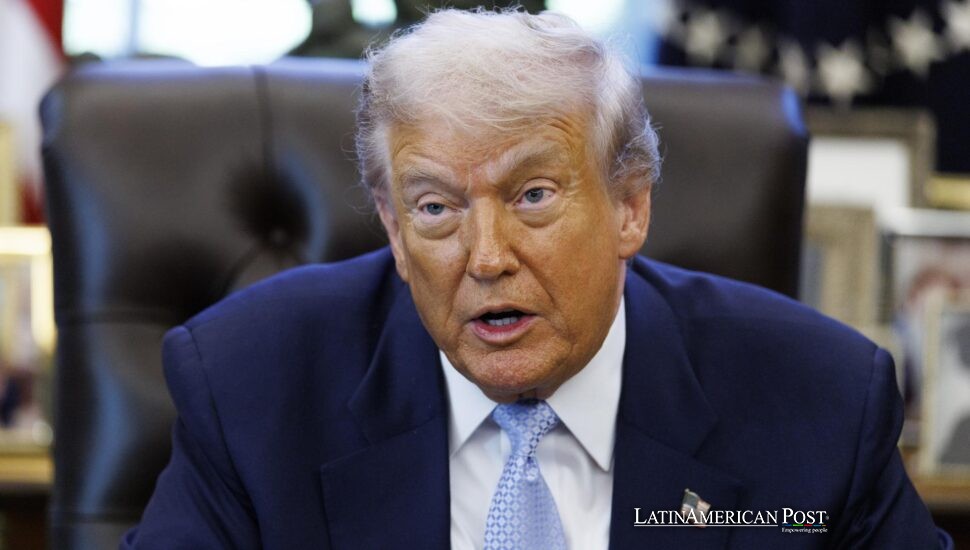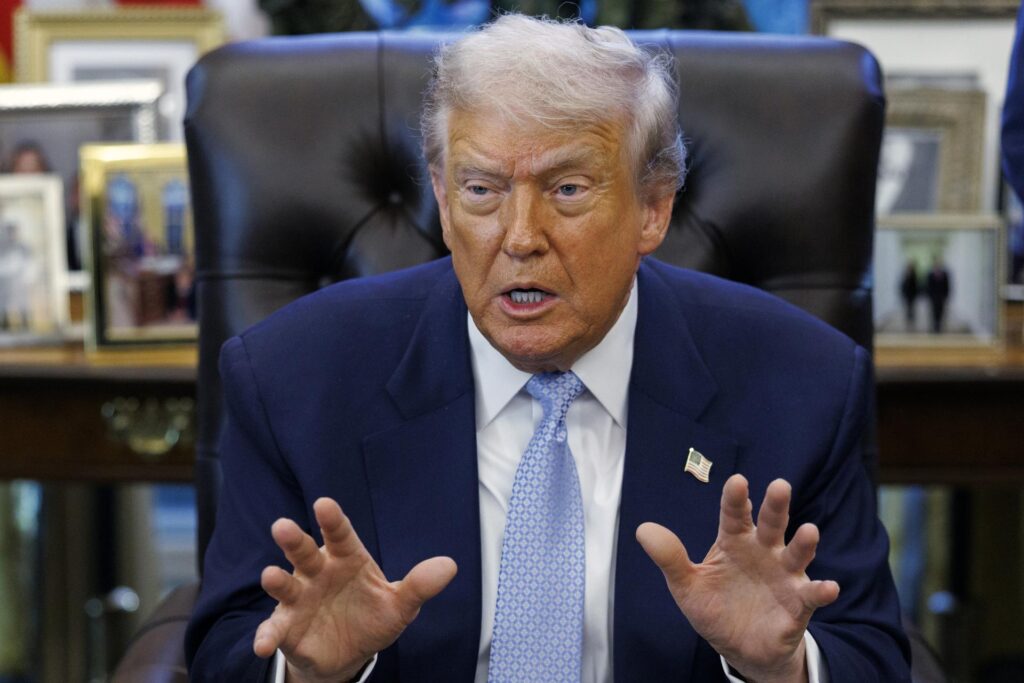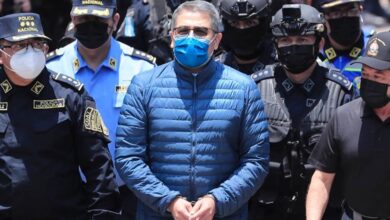Hardball in the Hemisphere: How Trump’s New Order Fractures Latin America

Donald Trump’s hemispheric strategy, equal parts offers and ultimatums, has redrawn the diplomatic map from Mexico City to Buenos Aires. Warships, postponed summits, sanctions, and transactional favors now define the region’s relationship with Washington, forcing leaders to decide: cooperate, resist, or brace for both.
A Summit Postponed, a Hemisphere Exposed
The unraveling began with a silence, an empty seat at the Summit of the Americas. When the Dominican Republic abruptly postponed the gathering, the official note invoked “deep divisions … [that] currently hinder productive dialogue,” a phrase that, as The Washington Post reported, reflected something closer to paralysis.
Trump had made clear he would not attend, saying the date interfered with his appearance at the 2026 World Cup final draw. But the absence was contagious: fewer than half of the 29 usual participants had confirmed they would show up, regional diplomats told The Post. The message was unmistakable: hemispheric unity is cracking under the weight of Trump’s hard lines.
One senior Latin American official told The Post that holding the summit under these conditions was “not conducive to having a friendly meeting of any type … the atmosphere is just toxic.“
And militarized. Since September, Trump has ordered U.S. warships and thousands of troops into Caribbean waters to strike alleged drug-trafficking boats, authorized CIA covert actions, and threatened land attacks in Venezuela, according to The Post.
Even leaders who distrust Nicolás Maduro shuddered at the echoes of the 20th century, landings, coups, and covert interventions. They waited for Trump’s new national security strategy, rumored to pivot American power back toward Latin America. As one official told The Post, “We have to … wait and see how it is going to be applied.” Until then, every military deployment felt like a question with no safe answer.
Carrots, Sticks, and a Moving Security Perimeter
For Trump’s White House, the formula is simple: reward friends, isolate dissenters. “The overall strategy is America First,” a senior administration official wrote in an email quoted by The Washington Post. Countries that “align with U.S. interests” will find the door open to trade, financing, and even deeper military partnerships.
Those who don’t? They “will feel pressure to change course,” the official warned, especially if they “enable cartels” or give China or Russia access to infrastructure near U.S. borders. “Countries … are free to choose,” the official said. “And will be held responsible for their choices.”
Concrete moves back the promise and the threat. According to The Post, the administration has advanced plans for:
- An air base in Ecuador
- Rotational deployments in Panama
- Renewed military use of an airport in El Salvador
- Reopening a naval base in Puerto Rico
The idea is a shifting but permanent security ring, tying trade deals and development financing to counternarcotics operations run from U.S.-friendly soil.
For some governments exhausted by cartel violence, the offer sounds like a rescue. For others, it sounds like the old Monroe Doctrine with new branding.

Winners, Losers, and the New “Coalition of the Willing”
Trump’s transactionalism has already produced a winners’ bracket.
Argentina, under Javier Milei, one of Trump’s loudest admirers, secured $20 billion in currency support, The Post reported.
El Salvador received millions to imprison deported detainees.
Paraguay agreed to take in U.S. asylum seekers in exchange for security cooperation, with Guatemala accepting deported migrants under a similar arrangement.
And Trinidad and Tobago, whose prime minister said the U.S. military should “kill them all violently” when referring to drug traffickers, remarks quoted by The Post, earned praise as a “strong partner.” The country’s foreign minister soon announced joint military exercises with the 22nd Marine Expeditionary Unit, though he stressed he had no evidence they would support operations inside Venezuela.
But nowhere is the shift more visible than in Ecuador. In September, Secretary of State Marco Rubio visited Quito and celebrated the U.S. designation of Los Lobos and Los Choneros as foreign terrorist organizations, moves he said would let Ecuador “kill terrorists” themselves, according to The Post. Rubio pitched a potential free trade agreement, IMF support, and $20 million in military and anti-crime assistance.
Homeland Security Secretary Kristi L. Noem followed, touring the old U.S. base in Manta, the same one Ecuador closed in 2009. President Daniel Noboa has signaled he wants it back.
U.S. envoys then convened Argentina, Paraguay, Ecuador, and Panama into an informal bloc, a pro-Washington cluster inside a region long skeptical of U.S.-led alignments.
Where the administration has friends, it offers handshakes and helicopters. Where it has critics, it reaches for the sanctions drawer.
Pushback, Personalities, and the History That Won’t Fade
No rupture illustrates the stakes more vividly than the fight with Colombia.
After Gustavo Petro urged U.S. troops to disobey Trump’s orders, The Post reported that Washington canceled his visa and imposed sanctions, accusing him of ties to “narcoterrorists.” Trump then escalated, calling Petro an “illegal drug leader” who is “low-rated and very unpopular,” and threatening tariffs and aid cuts. “If Colombia doesn’t close up drug operations, the United States will close them up … and it won’t be done nicely,” he warned, according to The Post.
Petro answered by calling Trump a murderer and “barbarian” over the boat strikes, and canceling intelligence cooperation with Washington, a break without precedent in the U.S.-Colombia security relationship.
Mexico took a different tack. President Claudia Sheinbaum condemned the lethal maritime strikes but emphasized a path of expanded intelligence-sharing so Mexico could make arrests itself rather than rely on U.S. attacks, The Post reported.
Even Brazil, which absorbed 50% tariffs and public scolding over the prosecution of Jair Bolsonaro, ultimately found a détente. After a brief, tense exchange at the U.N., Lula met Trump at an Asian summit, and the temperature dropped. Trump called the discussion “great” and promised immediate talks. A senior U.S. official told The Post that Lula became “an instructive example” of how to get along with Washington: align with policies that “protect U.S. citizens,” and Trump will make a deal.
Still, Lula didn’t hide his discomfort. Speaking publicly, he condemned the maritime killings: “A head of state is not there to kill people; you’re there to arrest them.” Leaders must choose, he said, “whether you want to be respected and loved or hated and feared.“
That is the crux of Trump’s experiment. Allies get money, weapons, and influence. Critics get tariffs, sanctions, and public humiliation. And the postponed Summit of the Americas became the symbol of a hemisphere once again being asked to decide whether Washington’s embrace is a shield or a shackle.
In the meantime, the region holds its breath. For some, Trump’s clarity is attractive: deals without ideology. For others, the costs are written in the fine print of history. And as The Washington Post noted, the contradiction sits at the heart of it all: a strategy that promises predictability yet governs by confrontation, leaving Latin American leaders wondering whether today’s bargain will become tomorrow’s trap.
Also Read: Mexico Mourns Slain Mayors as Cartels Target Democracy’s Weakest Link




